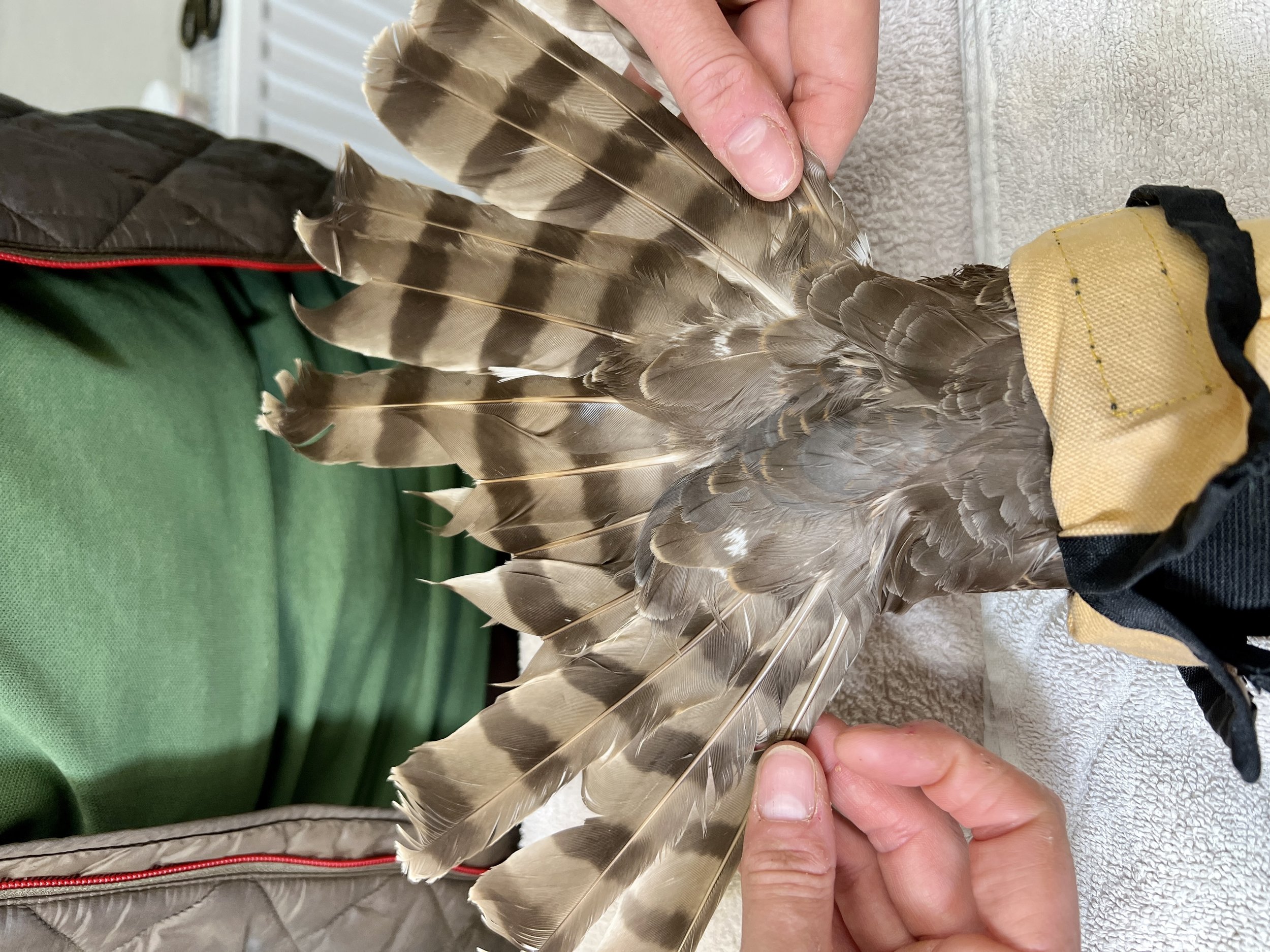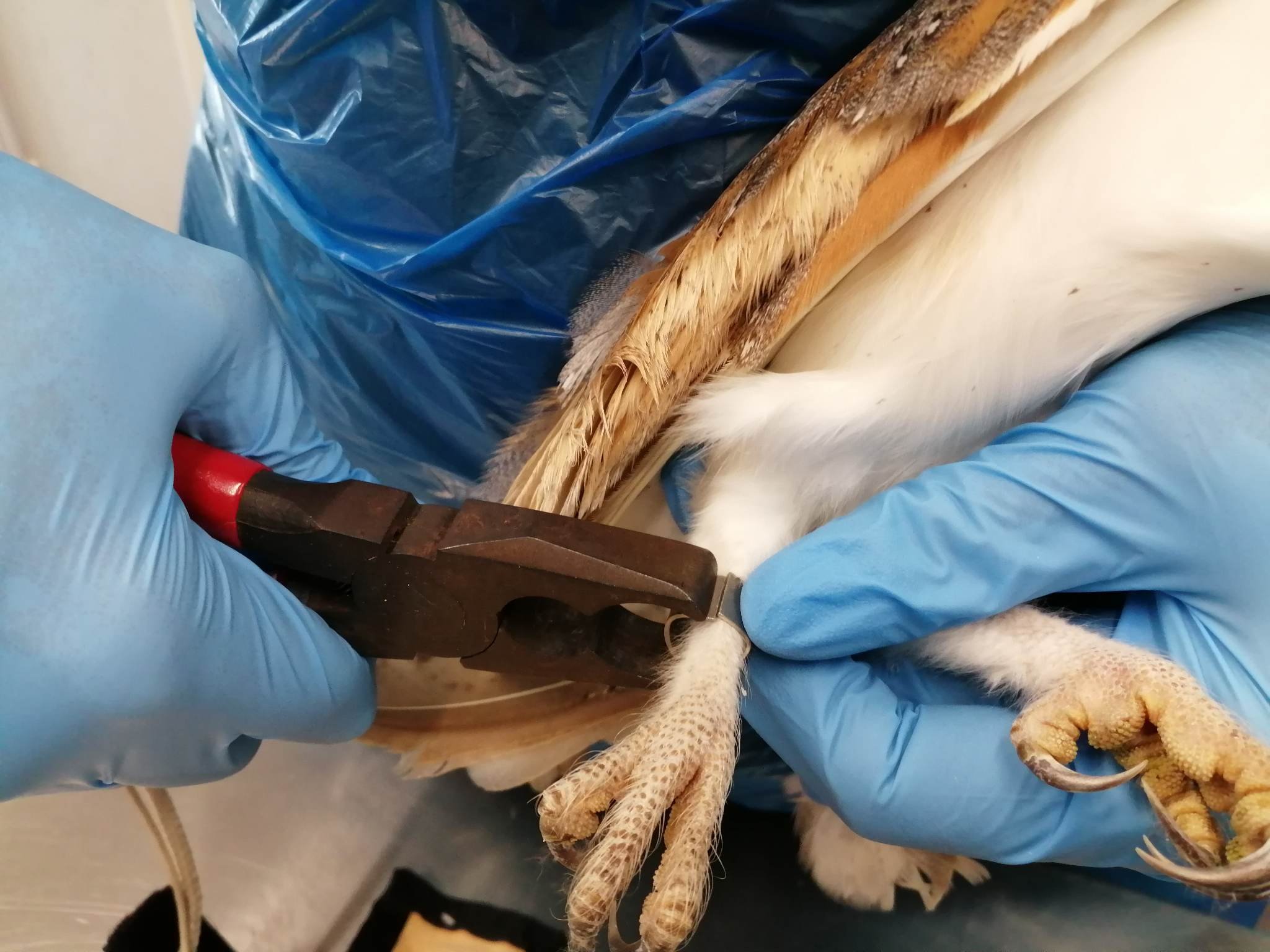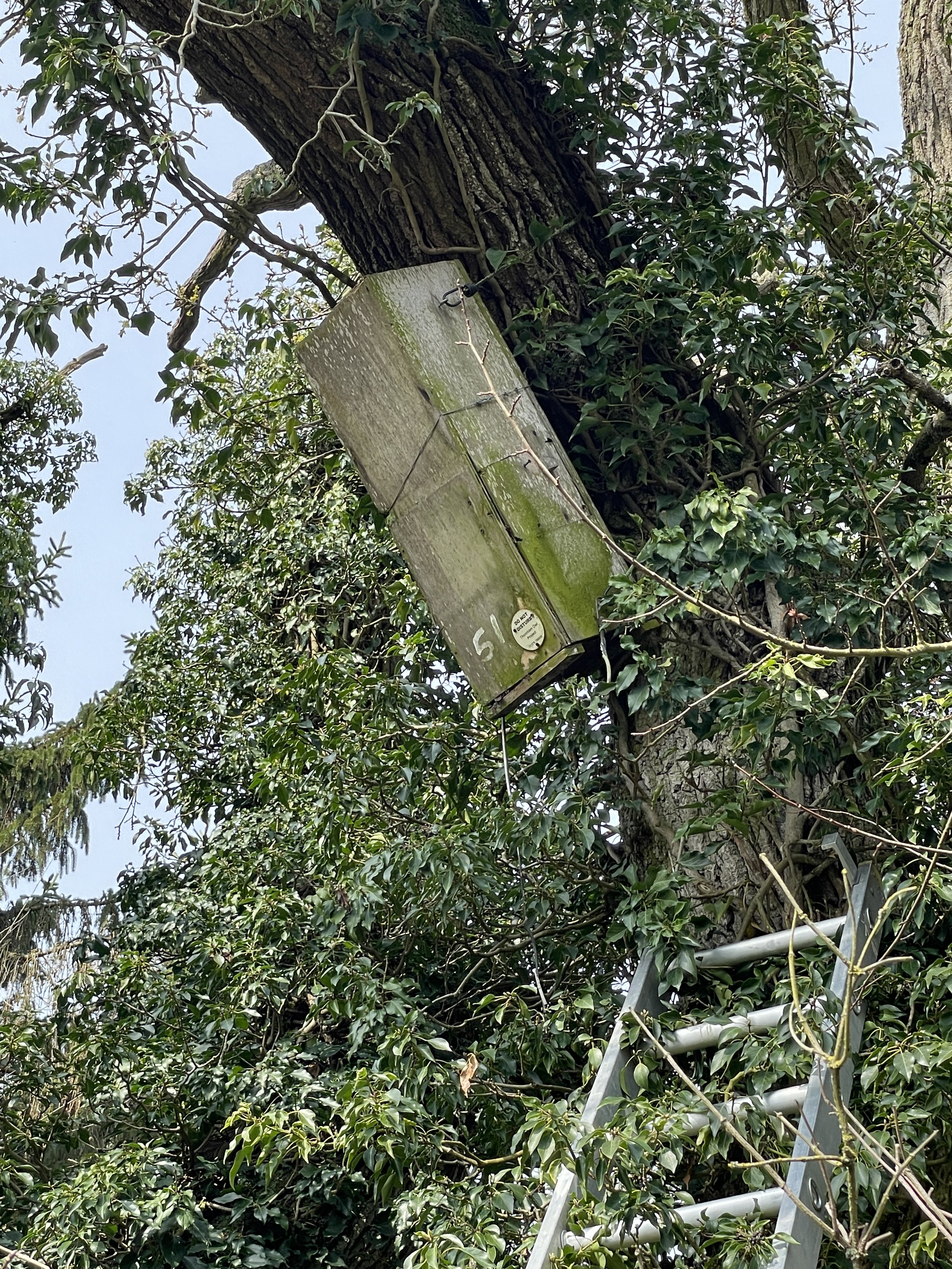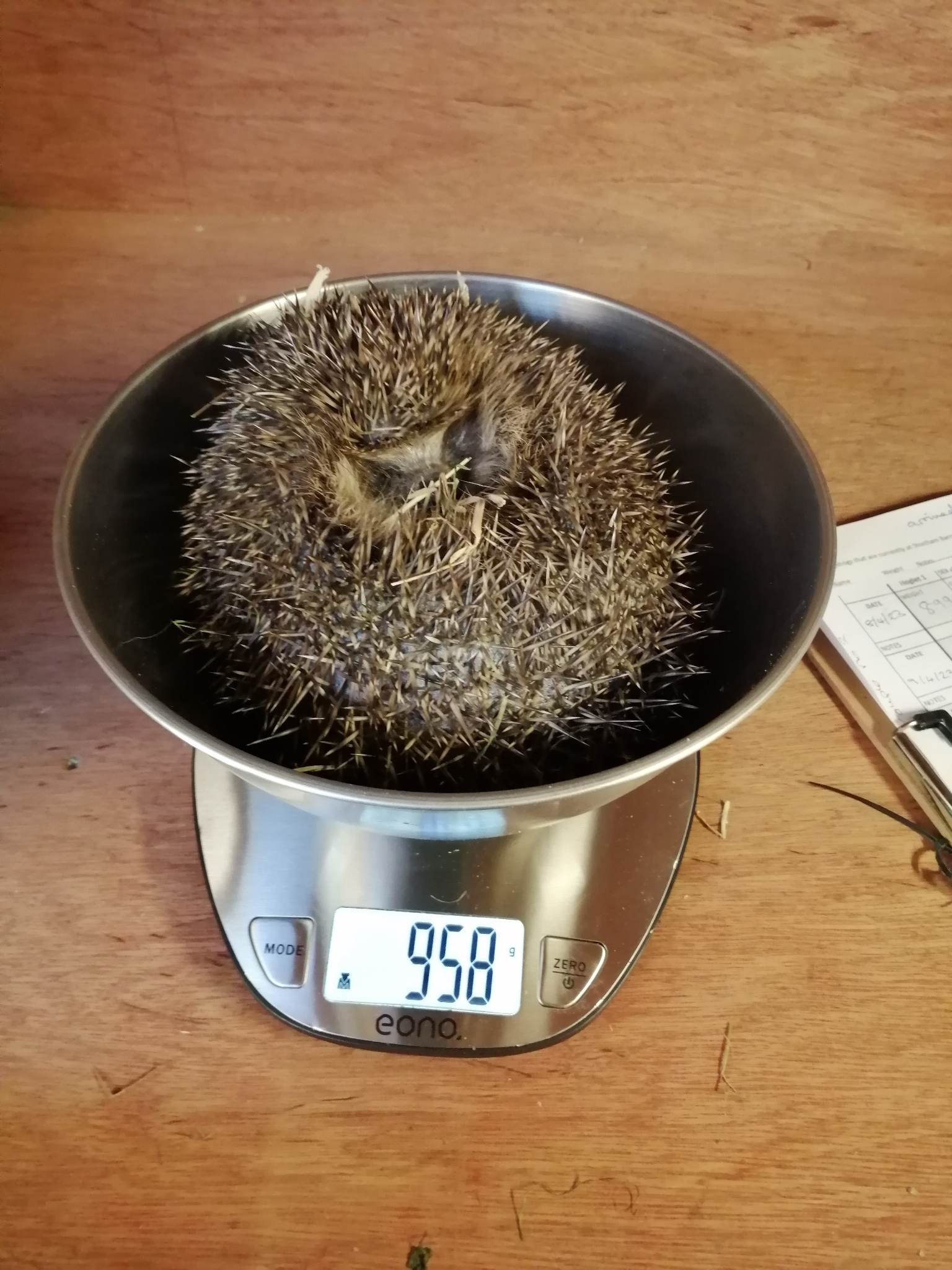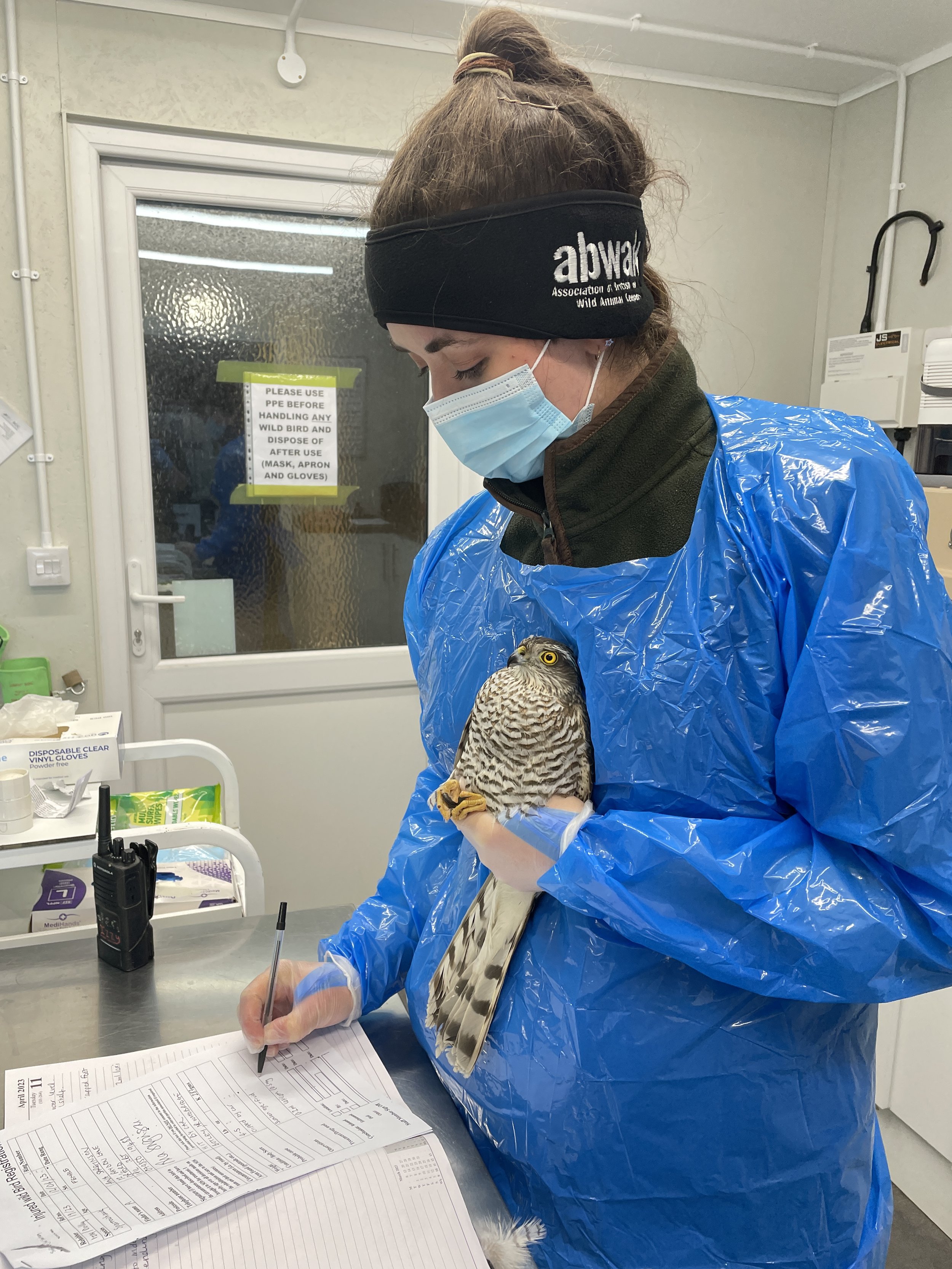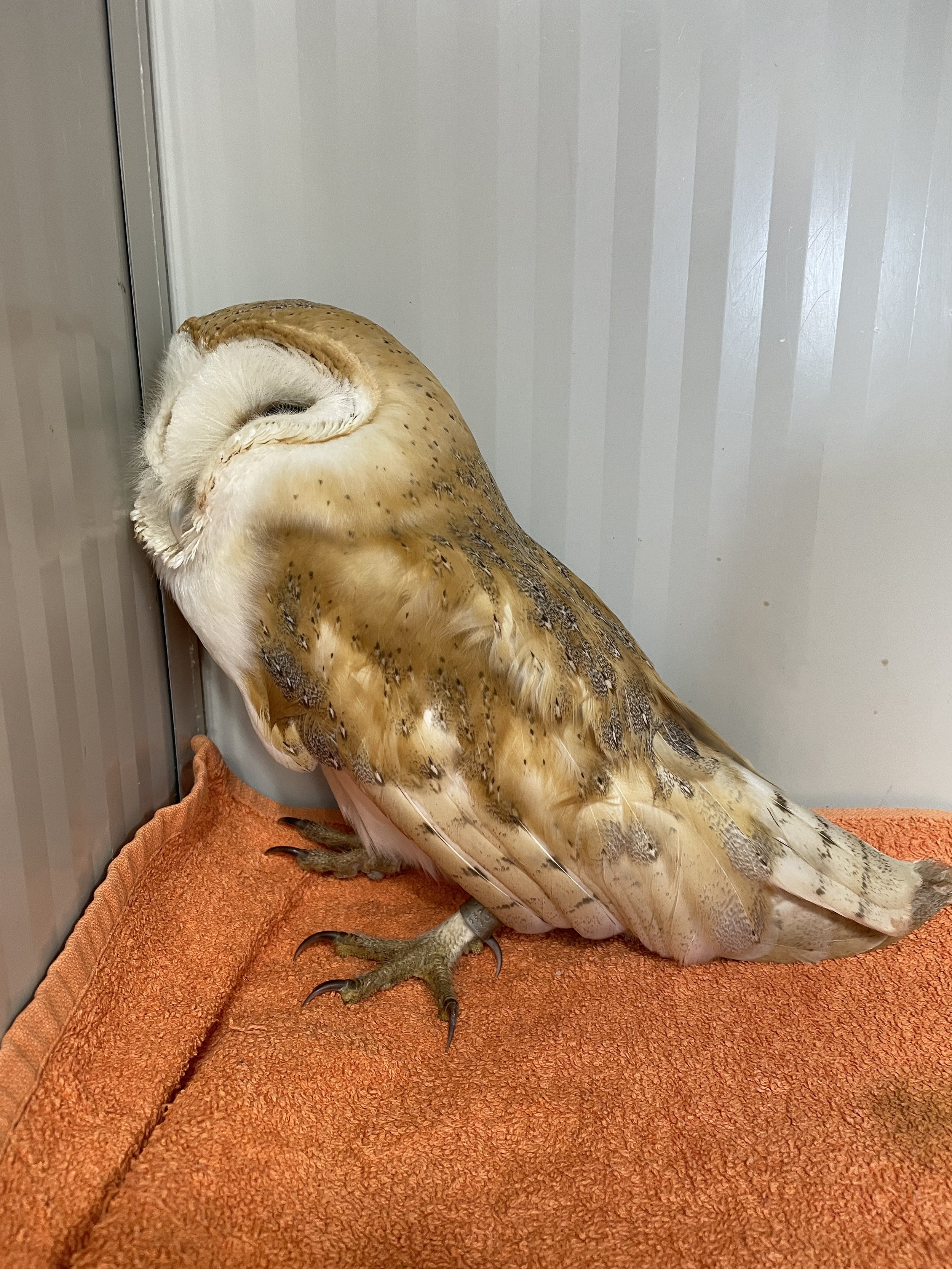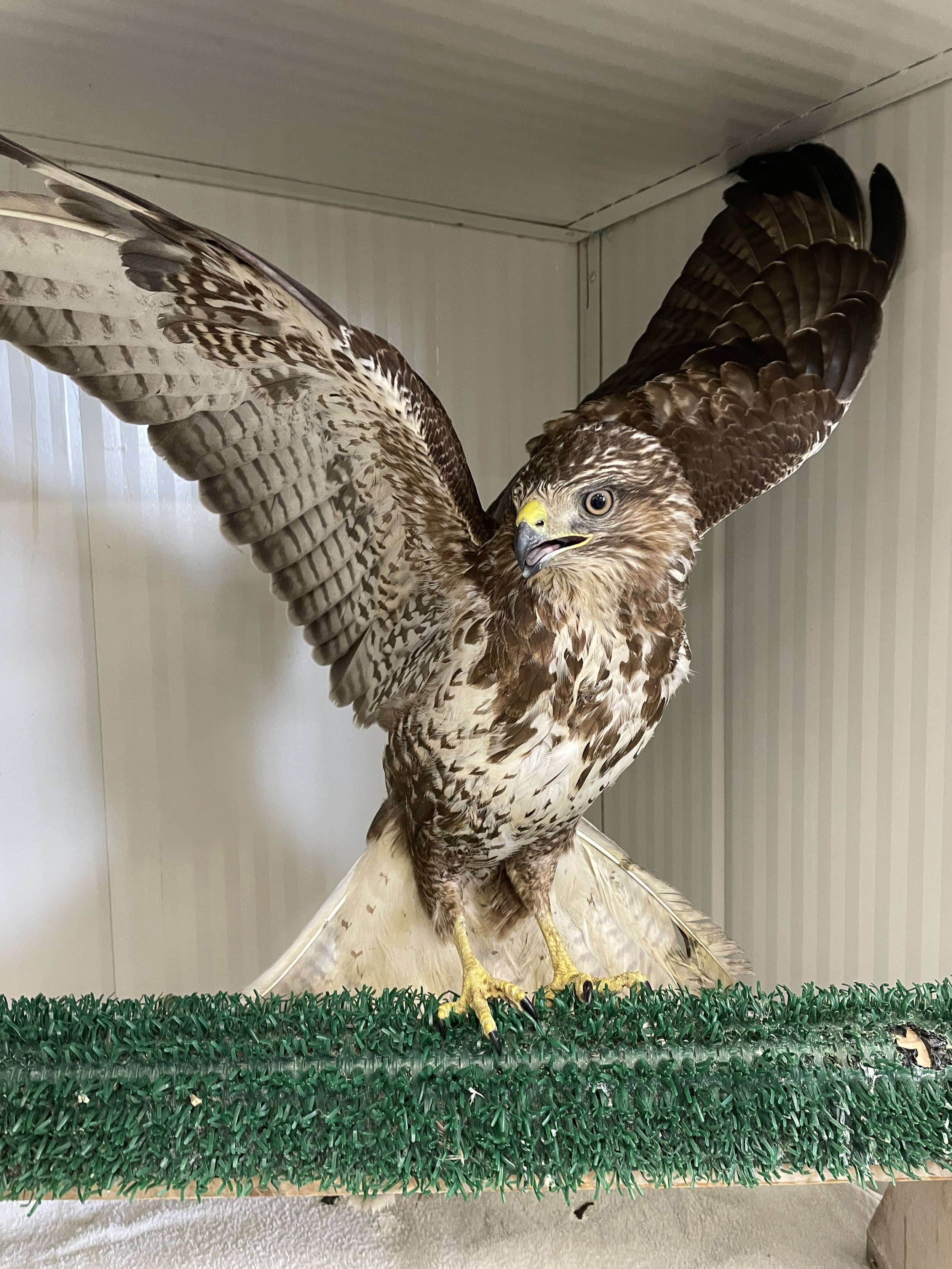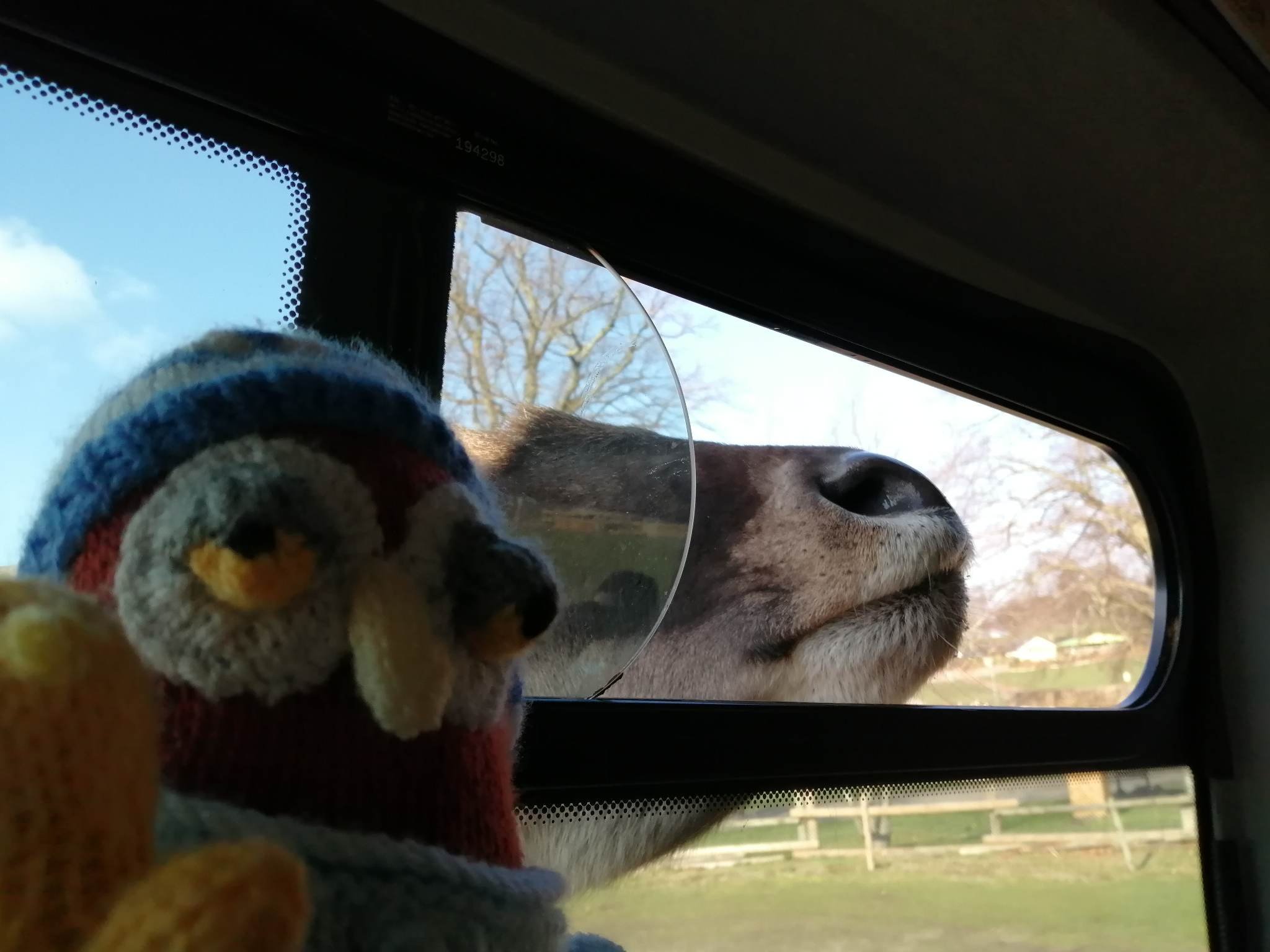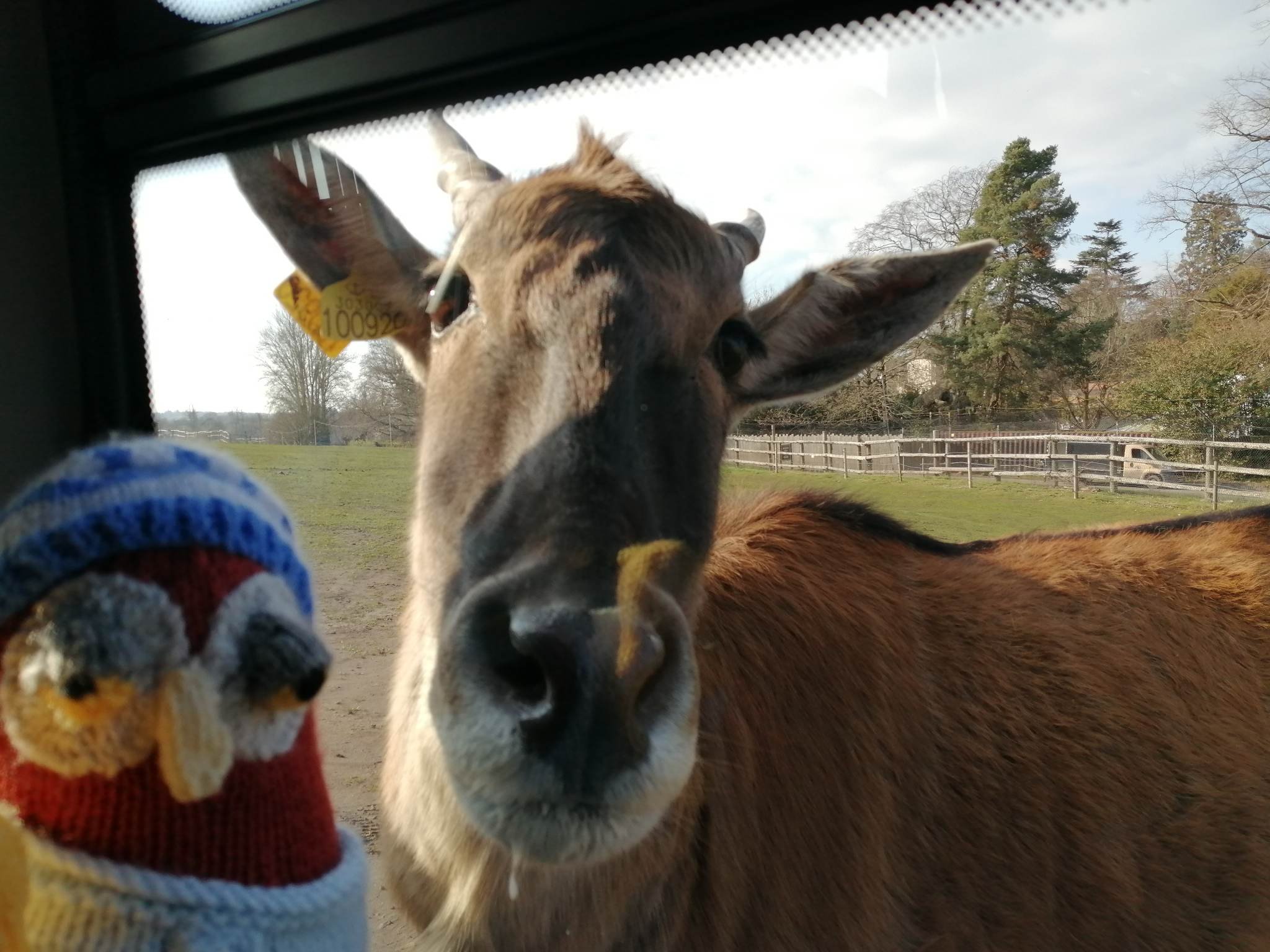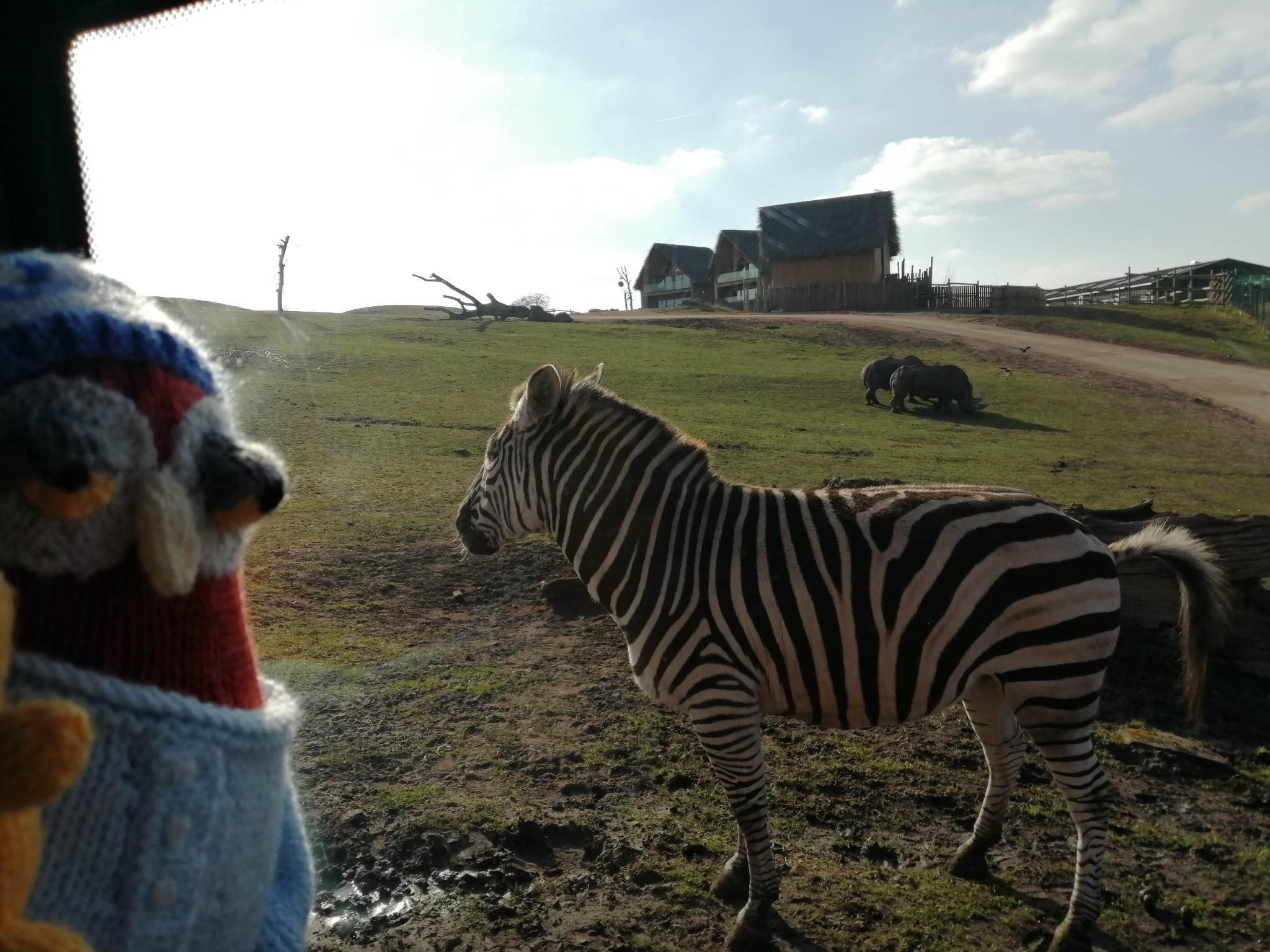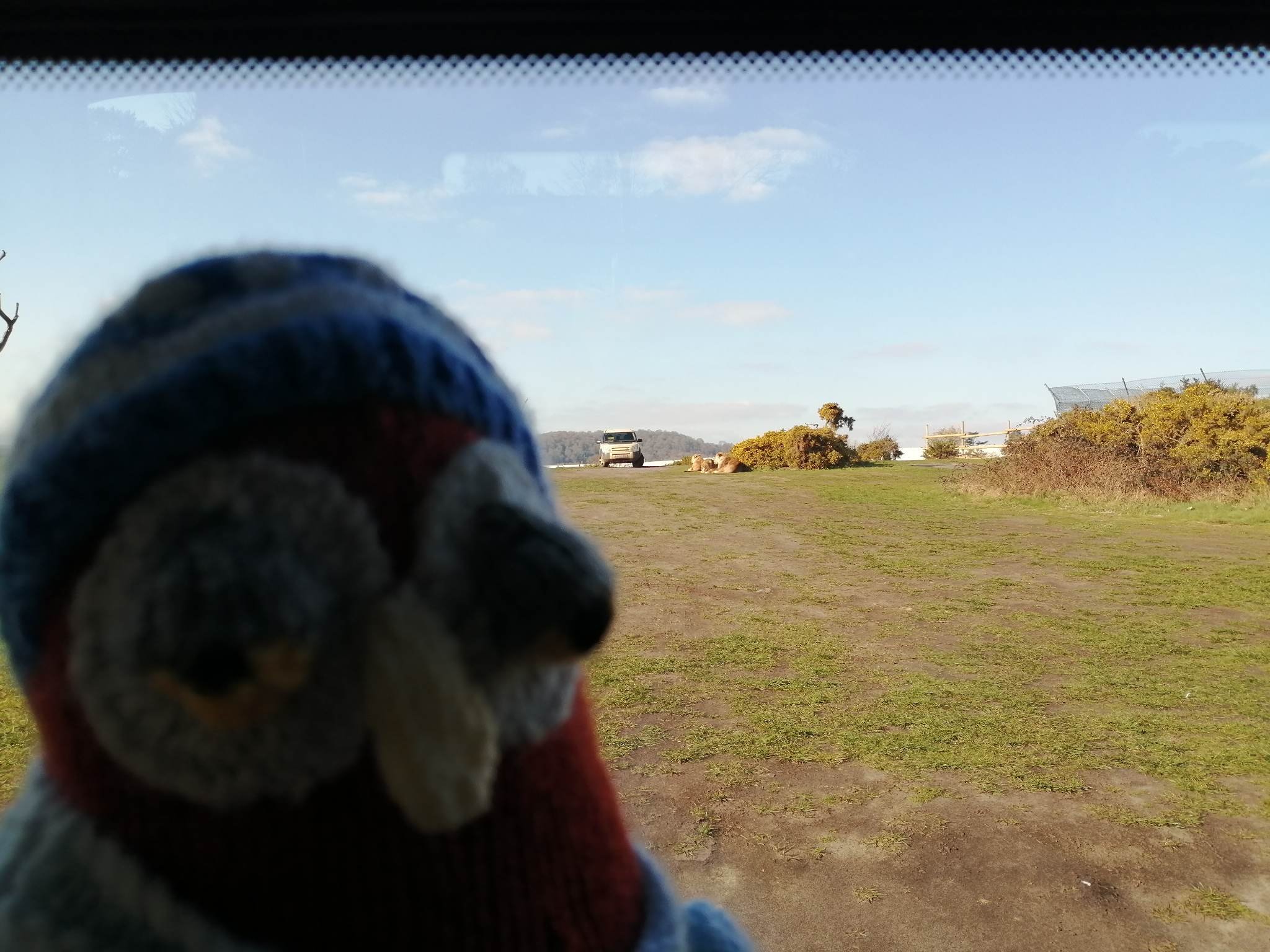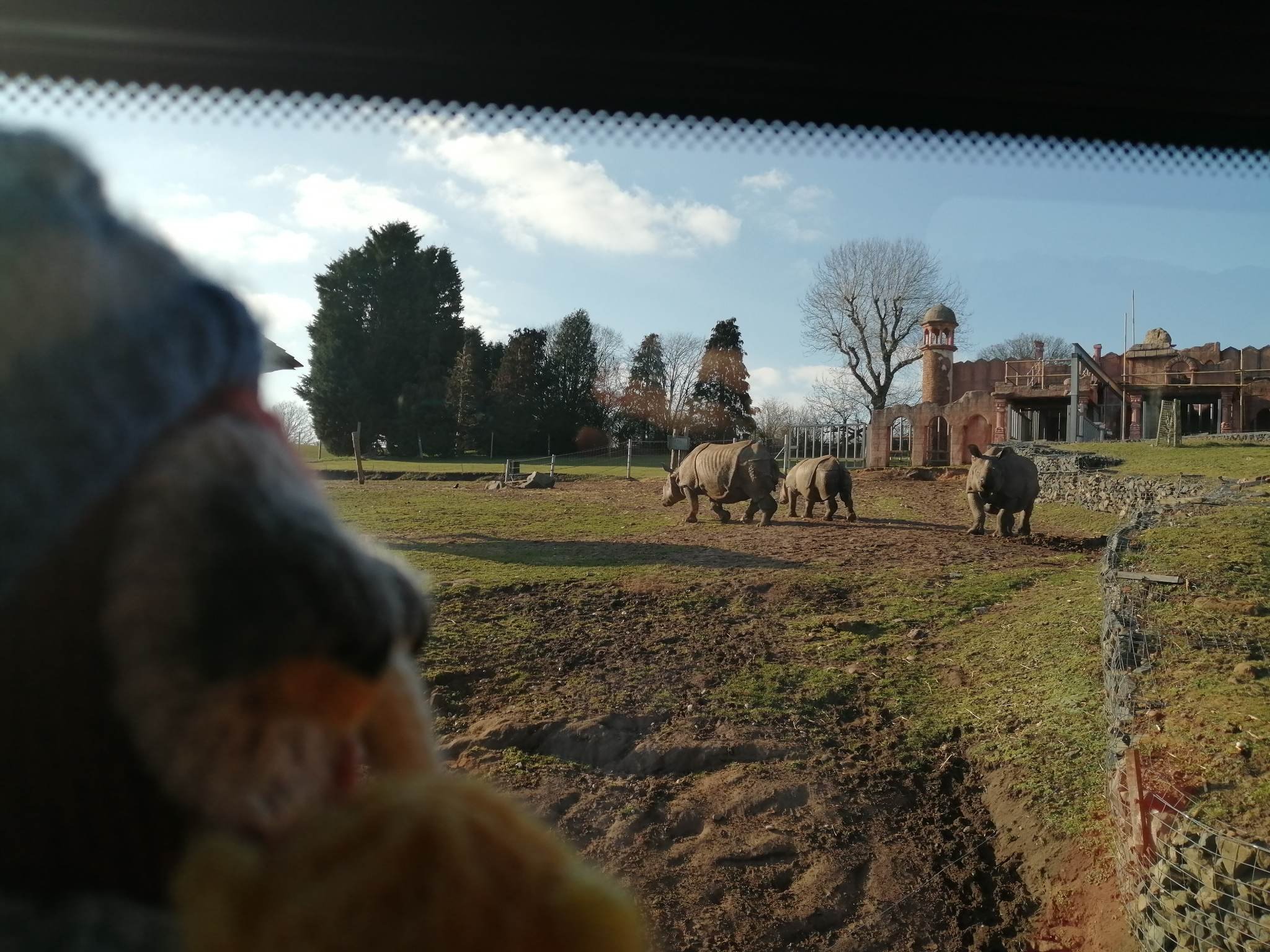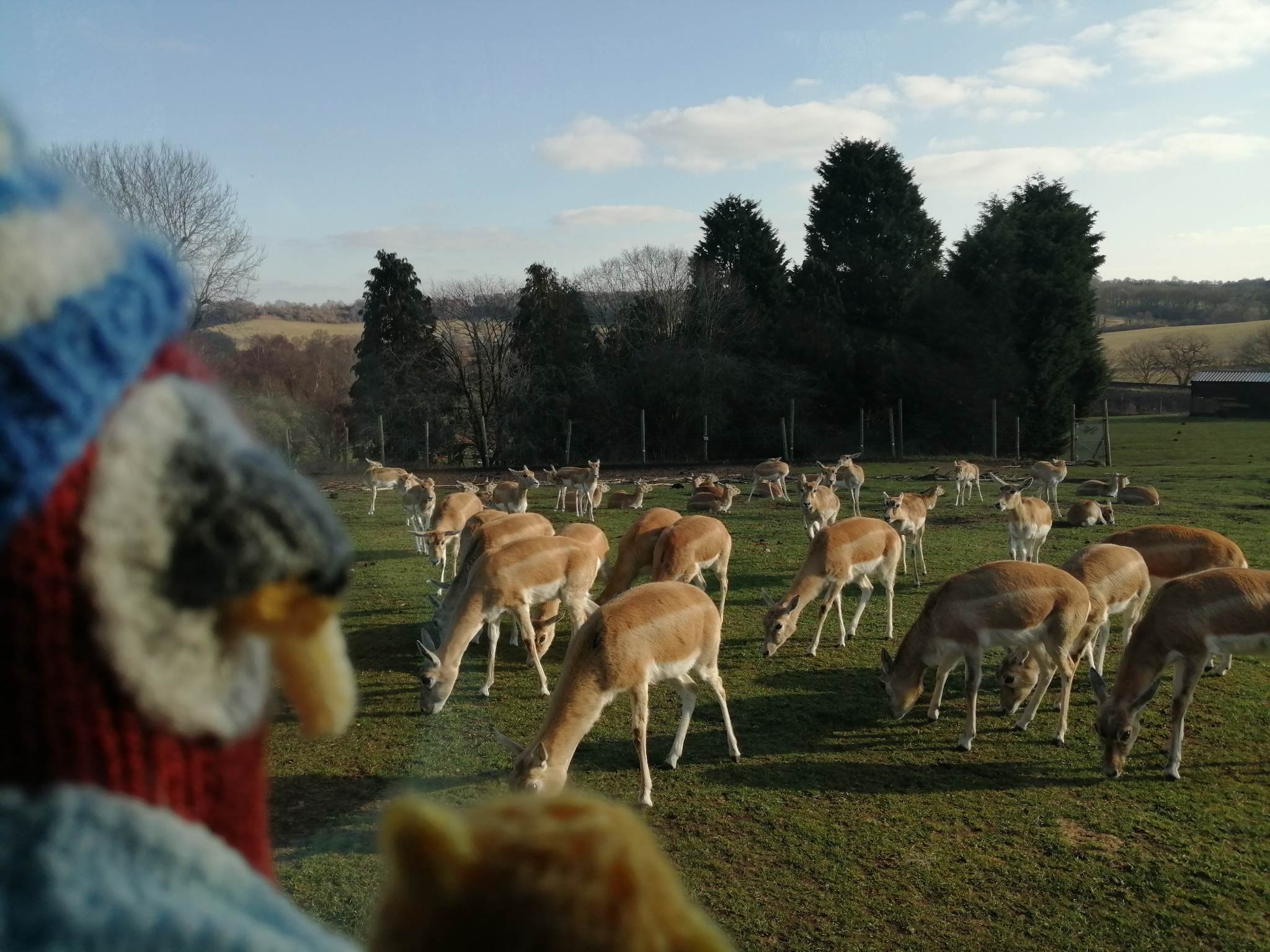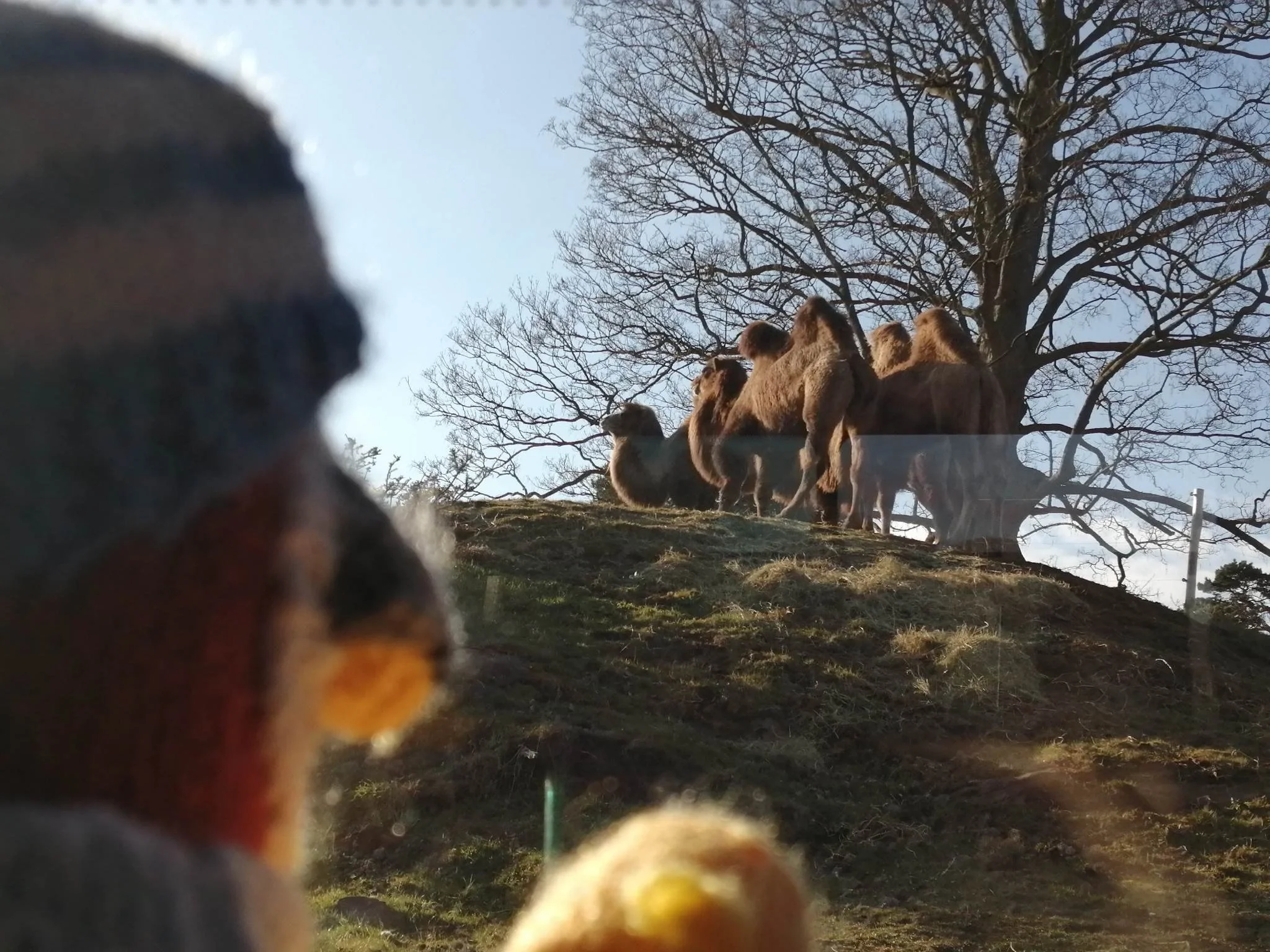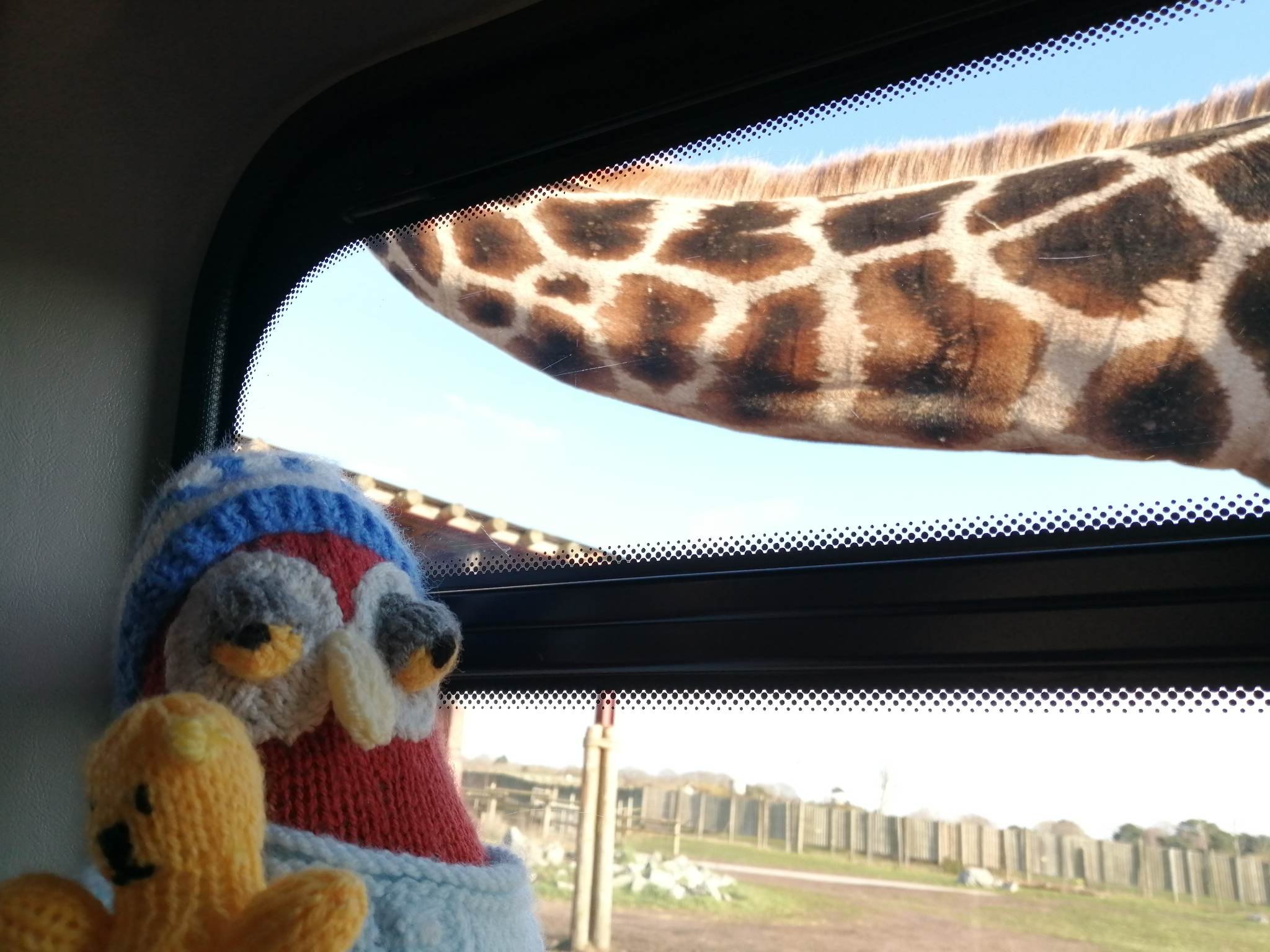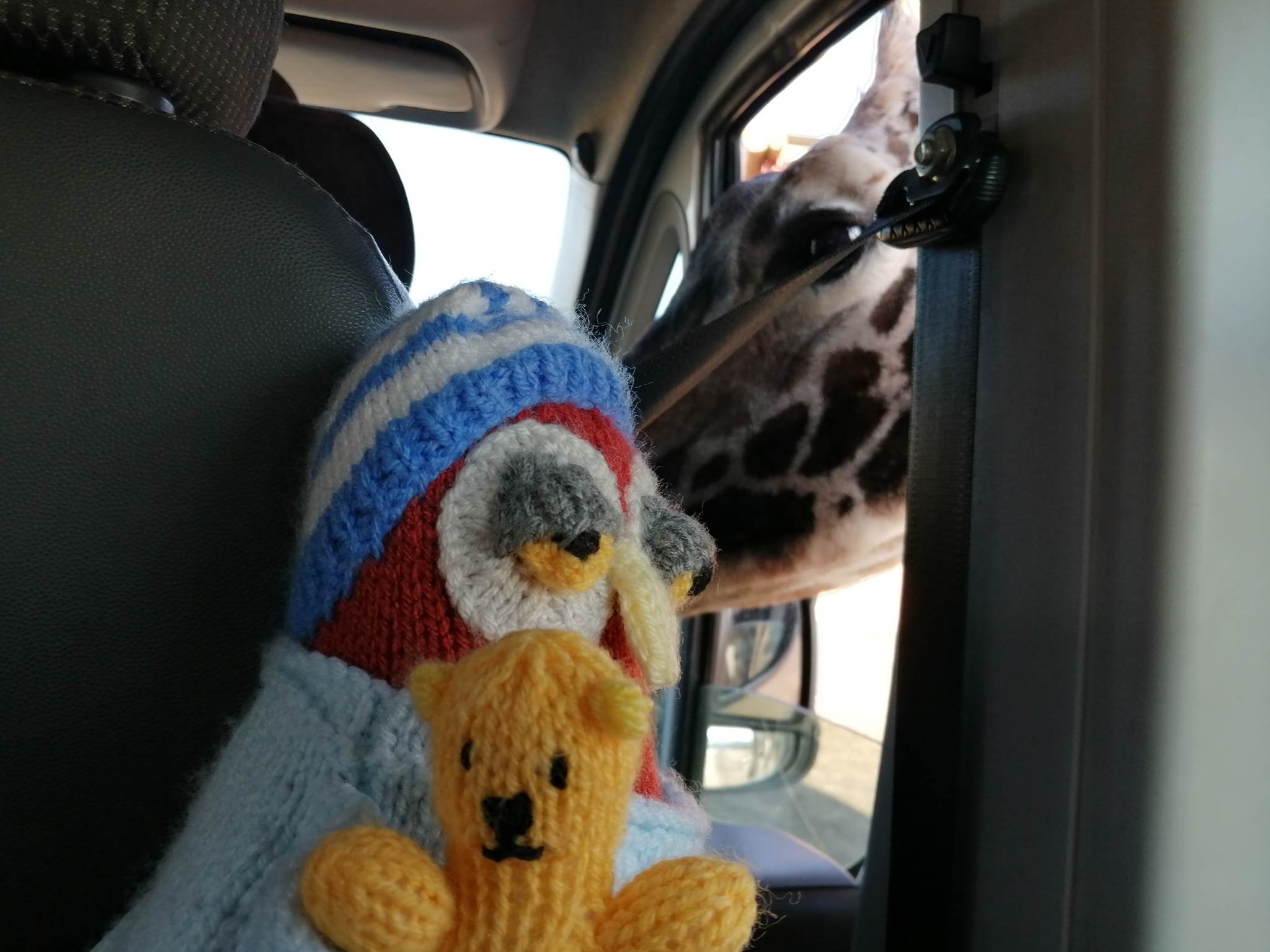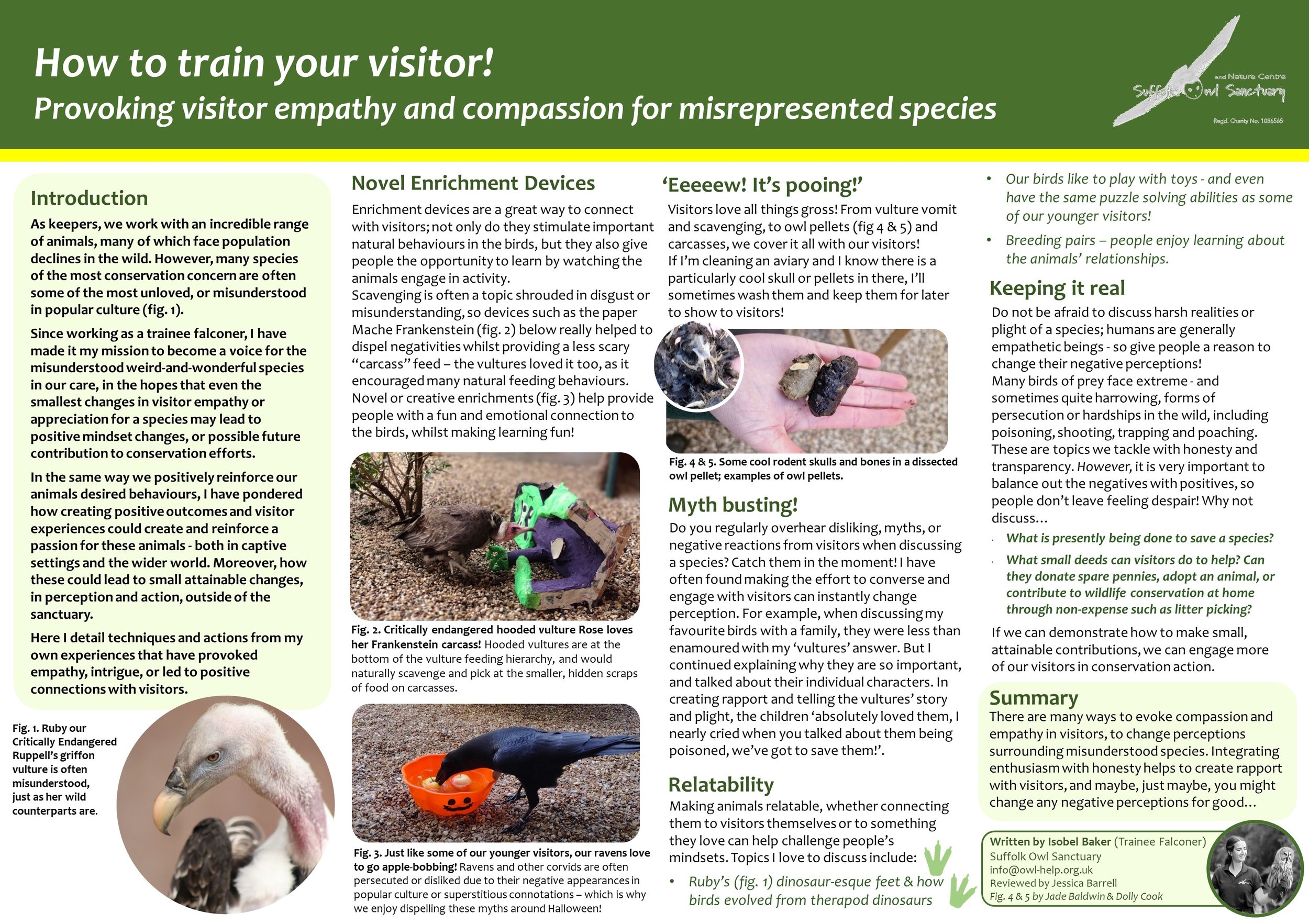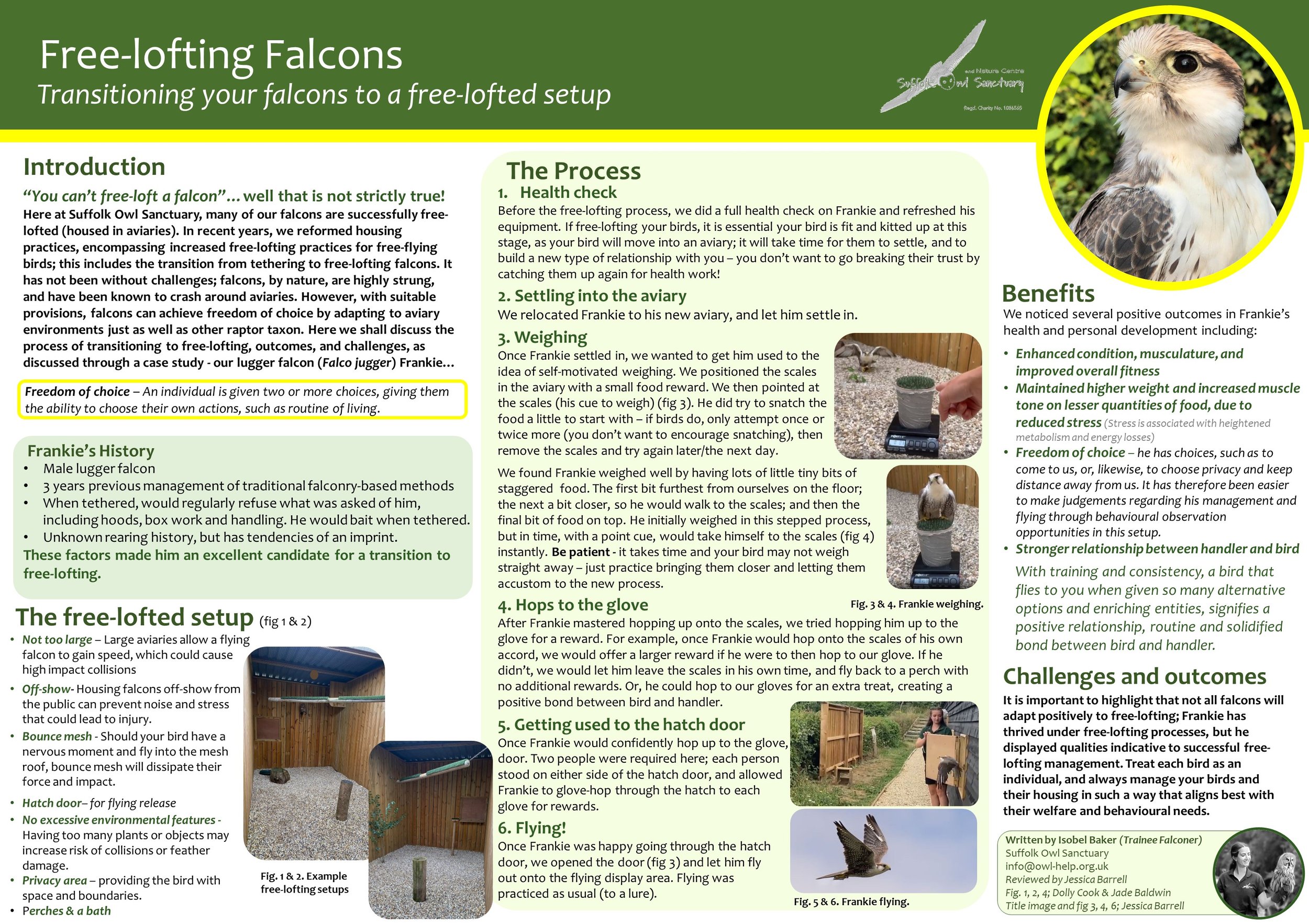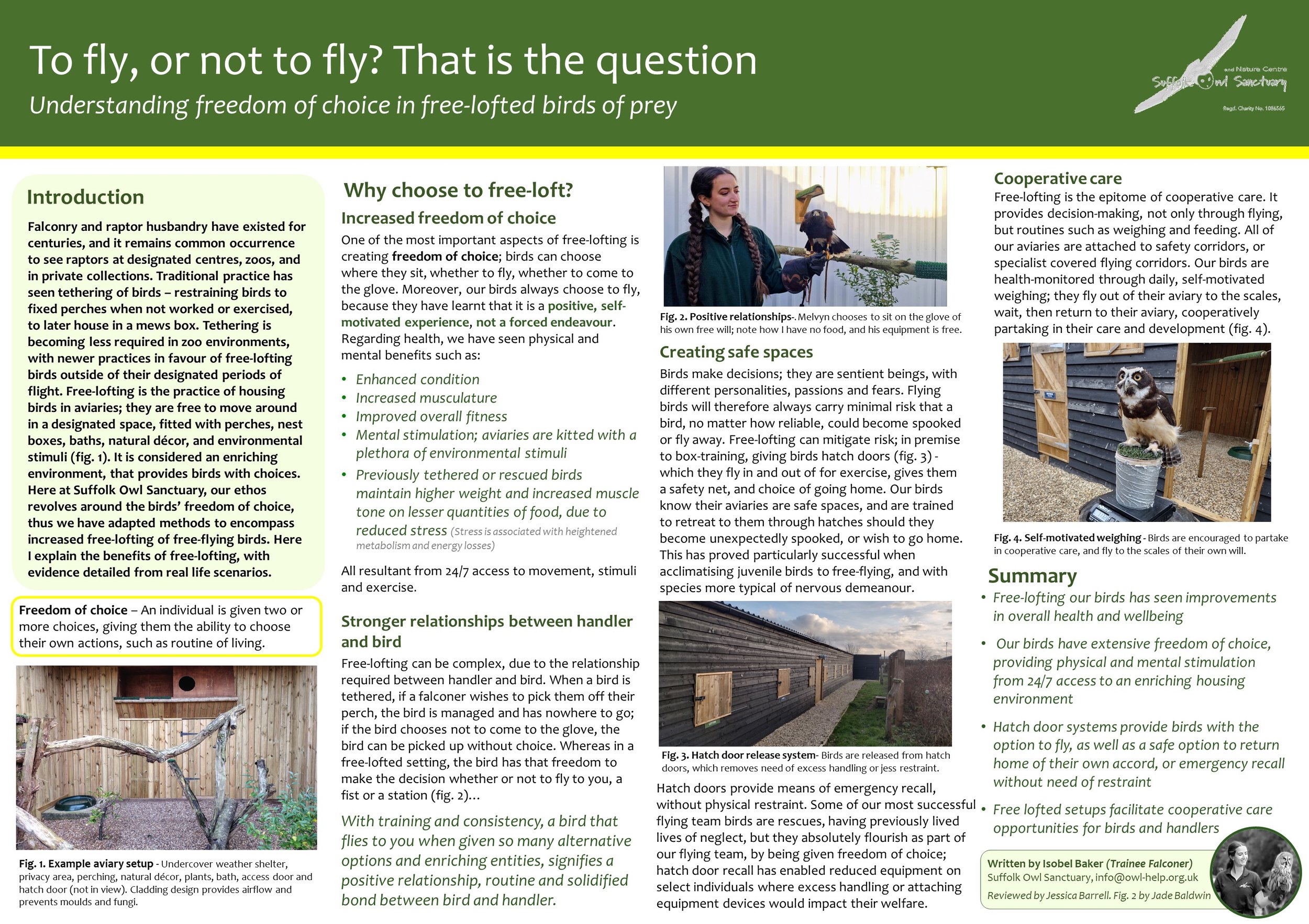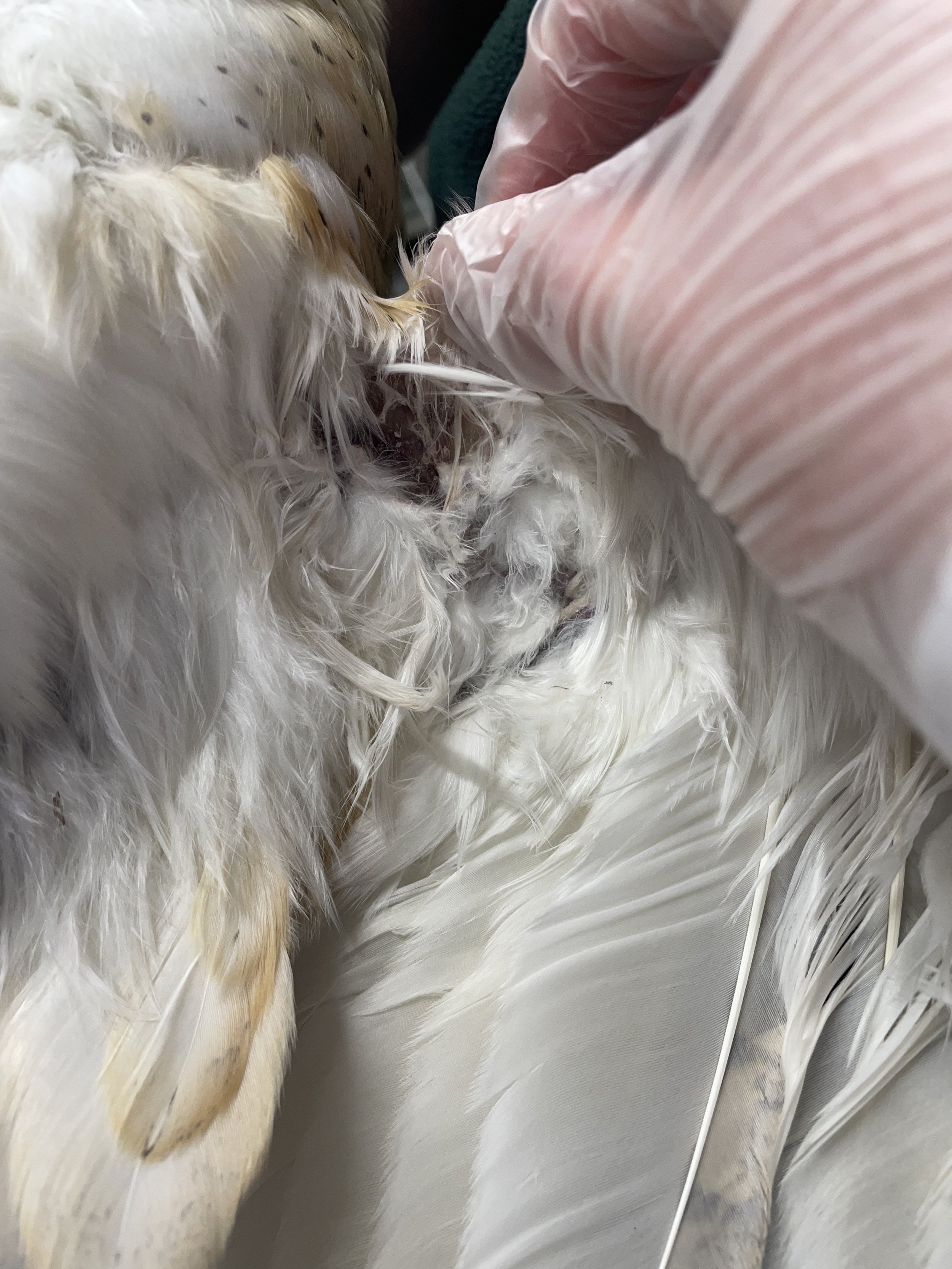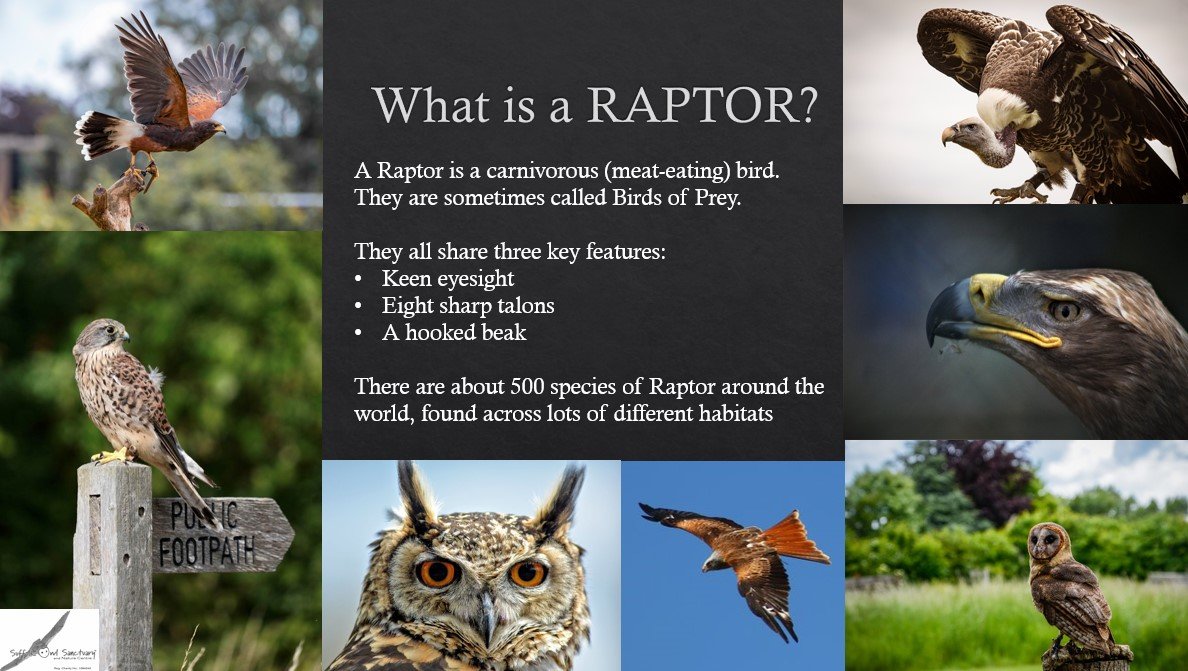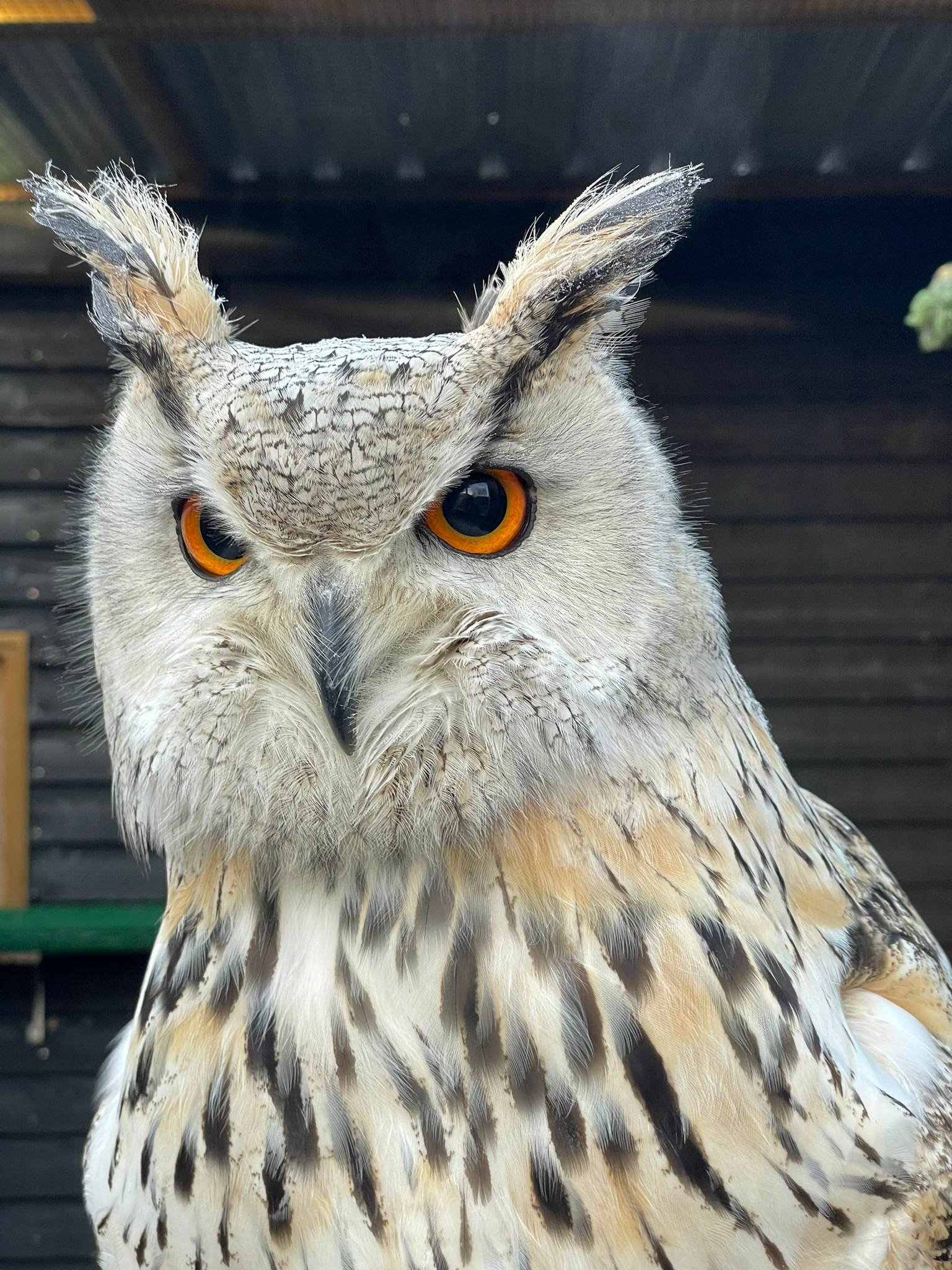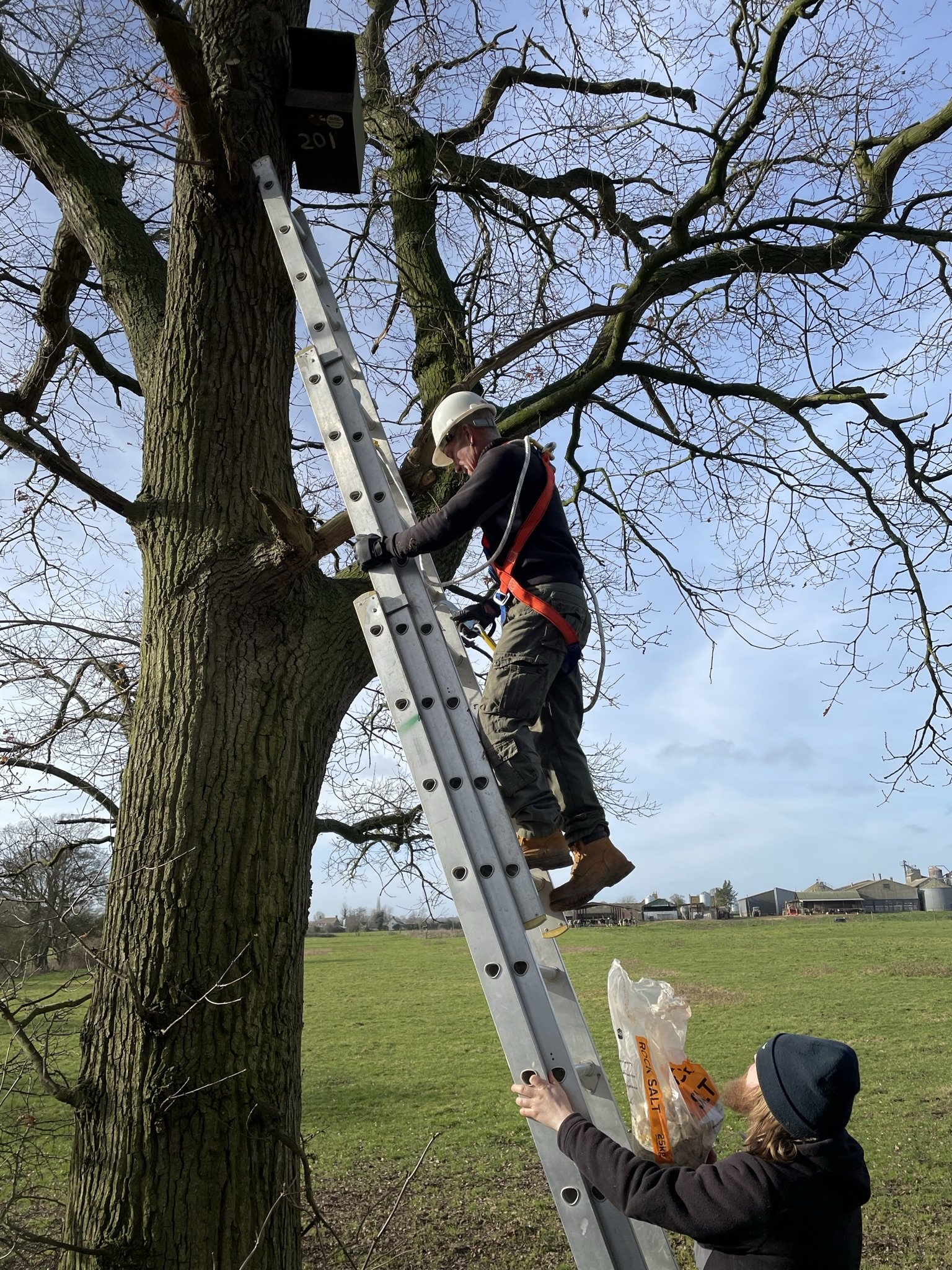The female Sparrowhawk who was hit by a car has received a new tail before being released.
The poor bird suffered from impact injuries to her face, but was rolled underneath the vehicle, causing significant damage to her tail. Whilst her head injuries subsided after a few days of treatment, feathers won’t be replaced until the next natural moult cycle, which in birds of prey is generally at the end of the breeding season.
Three tail feathers were snapped almost in half when this Sparrowhawk arrived, leaving a big gap in her braking and steering system.
Tails are vital for a pursuit predator like a Sparrowhawk, as they act as the steering and braking system, so we were concerned about releasing her with a faulty system. Thankfully there is a method of replacing broken feathers that has been perfected over the centuries by falconers and is now frequently used to rehabilitate wild rescued birds.
We put out an appeal to our contacts who may have some suitable moulted feathers which we could use, and thankfully we were able to source some. Jess performed the procedure, but it was a useful training experience for our newer staff members, as it’s not a procedure we’ve had to perform in recent years.
Imping involves cutting a new feather to the exact size to replace the missing part of any damaged feathers. The new feather is then carefully slotted into the central shaft and glued into place, being meticulous not to get any glue on the soft feathery filaments.
As you can see from the photo, Jess did a great job, making it impossible to see which feathers have been imped, with the only sign that the plumage is ever so slightly different!
Spot the new feathers!
This Sparrowhawk was left for a couple of days to check how she liked her new tail, then she was released near where she was found.

